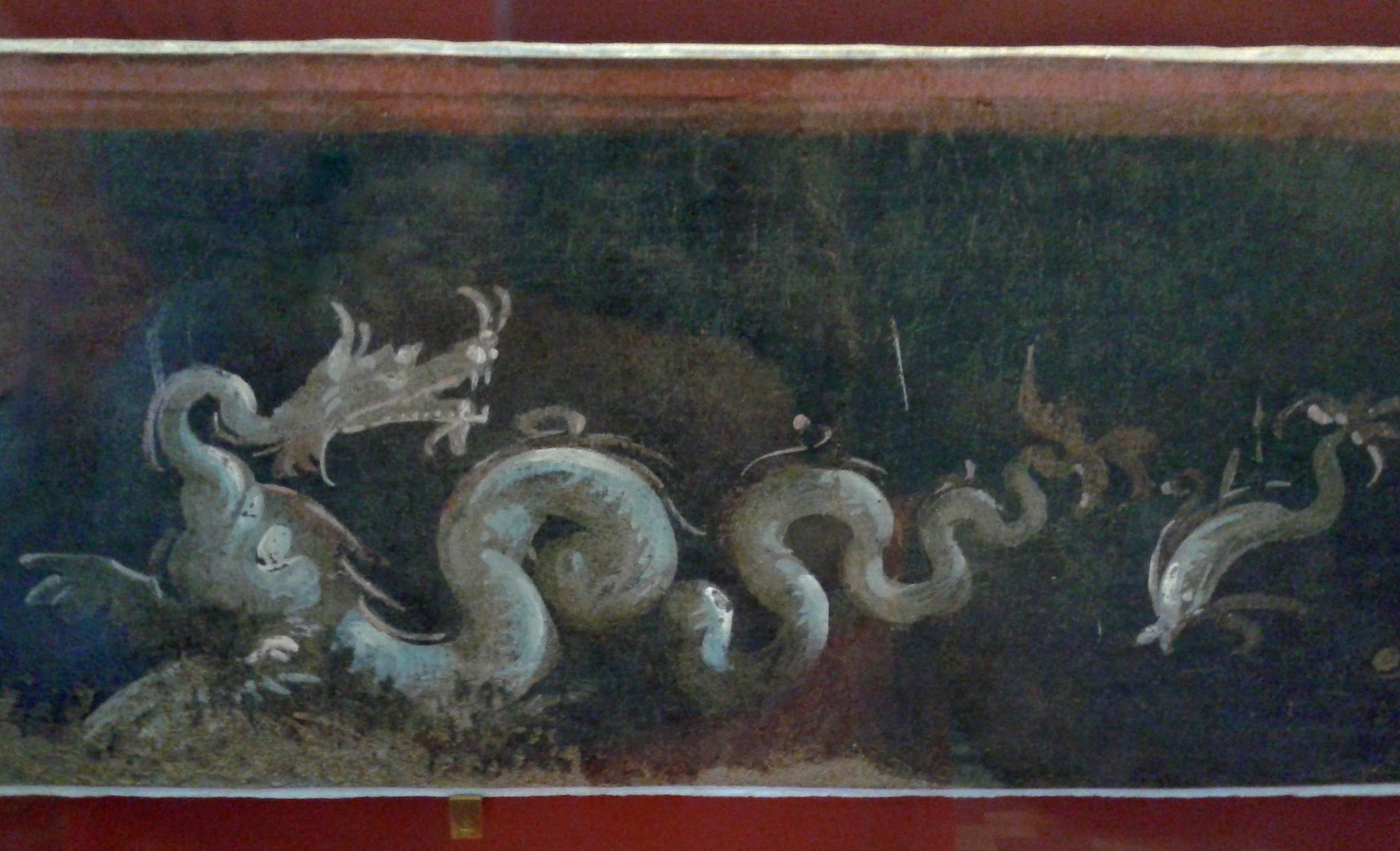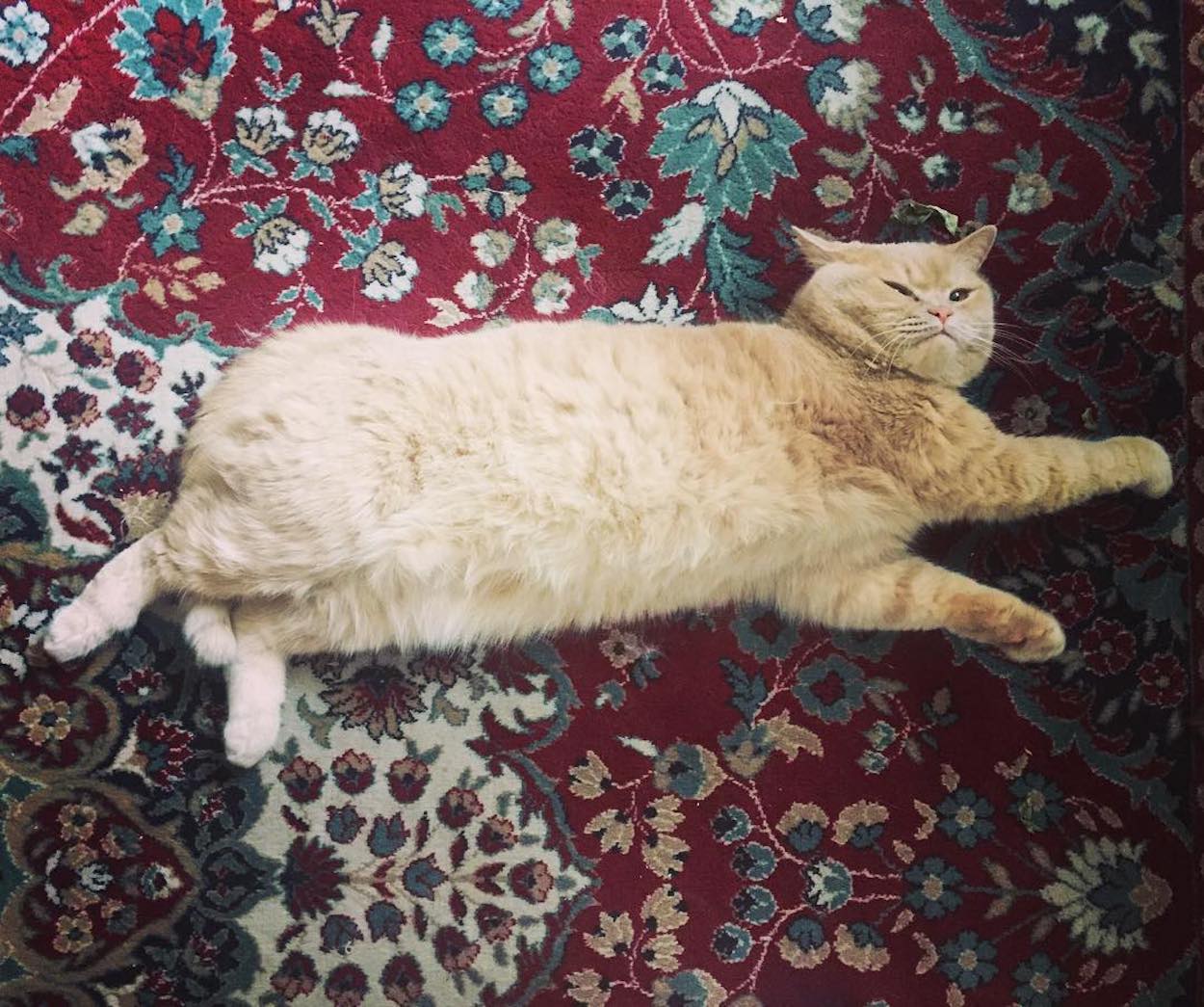It has been several weeks since the devastating fire that gutted the National Museum of Brazil on 2 September 2018. It is possible we will never know the full extent of what was lost, but we do have preliminary word that this Pompeian fresco is among the casualties.
This sinuous sea dragon, with its accompanying dolphins, adorned the Temple of Isis (known also as the Ekklesiasterion), on the lower walls of the room in which the goddess’ worshippers met. The panel, which measured about 148cm x 51cm (58.25 x 20 inches), dated from the 1st century CE. It was a lovely example of the Fourth or “Intricate” Style, which was a lively, more-is-more mix of mythological, genre, and still-life themes. This style allowed for both illusionistic techniques and plenty of ornamental flourish. It is an explicitly decorative style, intended to make picture galleries of wall space in both public and private buildings. It would have been seemed modern and bold to Pompeian viewers!
The rediscovery of Pompeii in the 16th century revealed many beautiful frescos such as this under the ash—and also endangered them because the fresco pigment-on-damp-plaster technique is extremely fragile and suffers even when simply exposed to air. This fresco, along with a similarly sized panel showing a horse/sea snake figure also accompanied by dolphins, were removed from the temple ruins and donated to the Brazilian museum. Displayed together there, both are now believed lost—first preserved by, then destroyed by, cataclysmic fire.
- Angela Gunn


 Unknown Artist
Unknown Artist